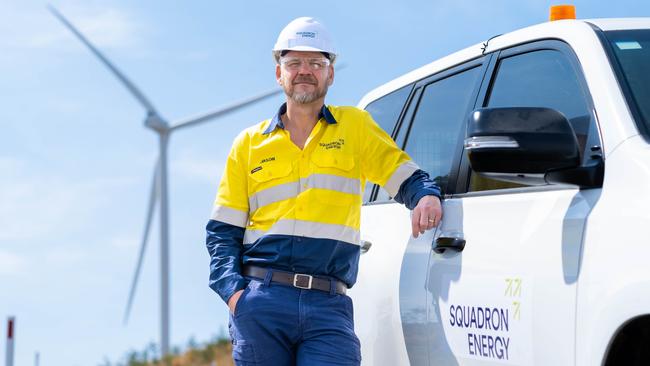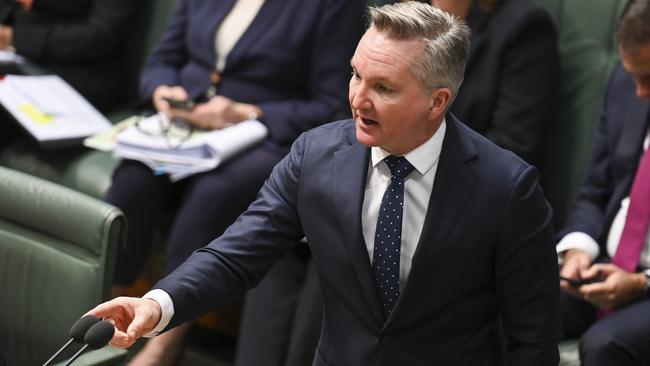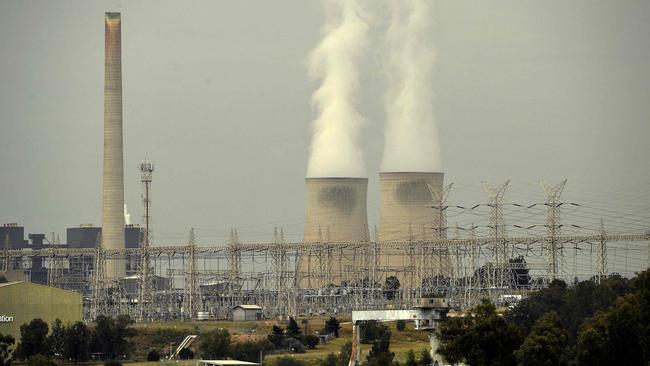‘Build renewables, not nuclear’: Energy execs reject reactors
Australia must focus on developing a huge pipeline of renewable energy as it can’t afford to wait for small modular nuclear reactors to become cost-competitive.
Australia must concentrate on developing a massive pipeline of renewable energy as it can’t afford to wait for small modular nuclear reactors to mature and become cost-competitive, energy executives have urged.
“The economics are clear: we need to act now to build wind, solar and batteries, not wait for a more expensive solution that won’t be available for more than a decade, at the earliest,” said Jason Willoughby, the chief executive of Andrew Forrest-owned renewables developer Squadron Energy.
“Renewables are the cheapest form of new-build electricity, including with the investment required in transmission infrastructure.
“The consequences and costs are too great not to act.
“Australia simply can’t afford to wait.”
Australia is struggling to meet its ambitious plans to replace its ageing coal power stations with renewable energy, and the federal opposition has proposed converting coal-fired power sites into small modular nuclear reactors to ease the transition.

Federal Energy Minister Chris Bowen recently released modelling showing that 71 small modular reactors would cost $387bn.
He said each megawatt of nuclear-generated electricity would have a capital cost of $18.1m – about $5.4bn per reactor – much higher than $1m for large-scale solar and $2m for onshore wind.
Energy experts said estimates for developing nuclear in Australia matched recent modelling internationally, although some expect costs to fall.
Robin Batterham, chair of the Net Zero Australia Steering Committee and emeritus professor at the University of Melbourne, said that if costs fell nuclear power could become a viable and cost-effective alternative.
“Costs do come down with time. We’re not trying to predict the learning rate for SMRs. When they come in, if the cost comes down … then they would have a role. Currently, they are just not in the race,” said Mr Batterham. His views are likely to be seized on by both sides of politics amid deep division and growing public unrest about the country’s progress in meeting its ambitious transition goals. While Labor is looking to undercut the drive for nuclear, energy developers fear the debate about Australia’s future energy mix will muddy the regulatory landscape and delay much needed investment.
Mr Willoughby’s comments echo a warning from Australia’s energy market operator, which said that without urgent investment in generation capacity the country was facing 10 years of unreliable power.

Australia’s energy industry has urged the country not to revisit its transition plan.
The federal government has legislated a target for more than 80 per cent of the country’s energy needs to come from renewable sources by 2030, an aim warmly welcomed by environmentalists and most voters.
But opinion may be turning as Australians reel from consecutive power bill increases of more than 20 per cent.
The transition also threatens disrupt Australia’s regions. AEMO expects two-thirds of all coal power stations to be shut in the next decade, a heavy blow for communities where they are a dominant employer.
Converting coal power stations to nuclear would temper the blow.
But the cost of building small modular reactors remains prohibitive, and major improvements wold be needed for it to displace renewable energy generation.
Opposition energy spokesman Ted O’Brien rejected the government’s calculations.
“We have to make sure we’re being very honest and are accounting for realistic costs and that is why we’re critical of the government when it came out with its 43 per cent emissions reduction target and its 82 per cent renewables target – (the government) never got the Department or the Treasury to do any economic modelling,” he said.

The Australian Energy Market Operator said renewable energy projects capable of producing 250GW of power had been announced, and industry figures estimate they will cost more than $320bn.
If that generation capacity is built, Australia is likely to have an exportable surplus of energy, positioning the country as a superpower of green energy.
But industry figures said Australia would need to build high-voltage transmission lines that have proved unpopular.
“Small-scale modular reactors may be years away, and there are just two demonstrable sites in the world, but it would mean Australia would not have to build new transmission lines and could use existing infrastructure,” said one executive.
About 10,000km of new lines must be built before 2030, but their development has been hampered by funding constraints and community opposition. The federal government says its $20bn Rewiring the Nation package, which offers cheap loans and concessional finance to transmission developers, will break the bottleneck.








To join the conversation, please log in. Don't have an account? Register
Join the conversation, you are commenting as Logout